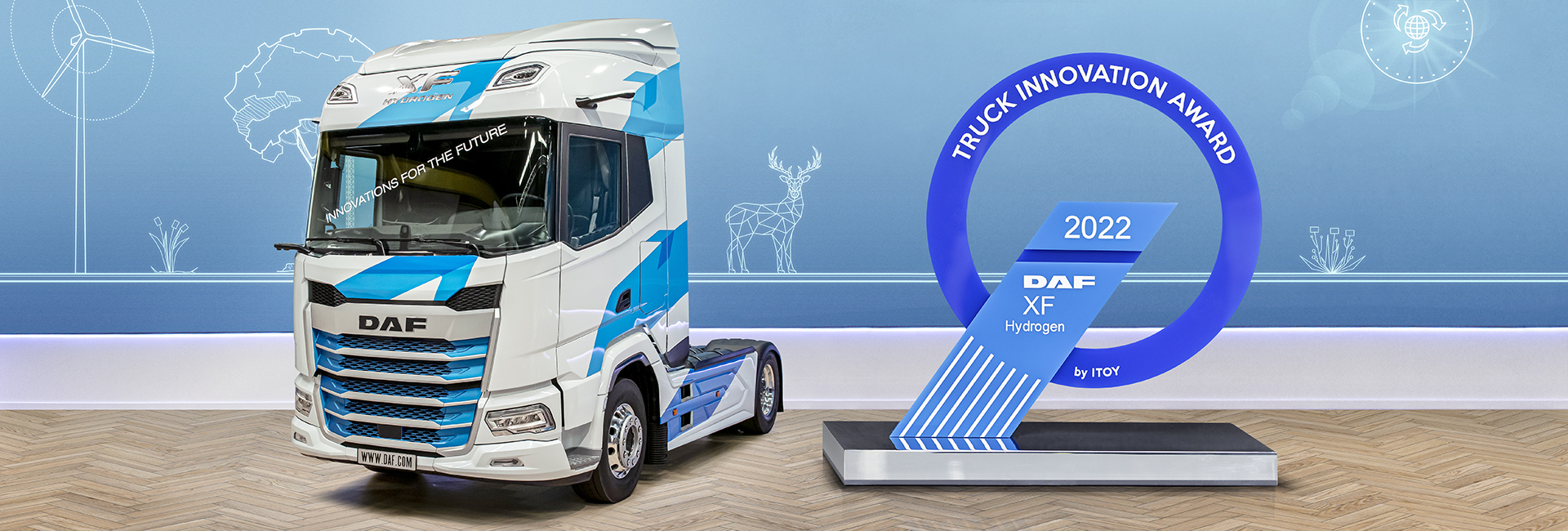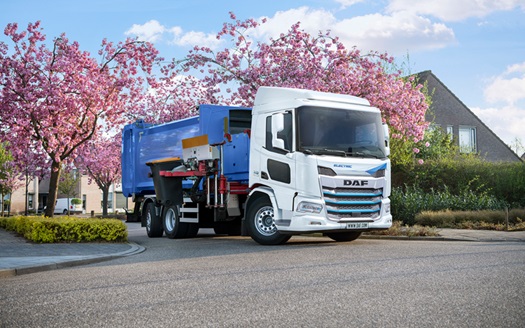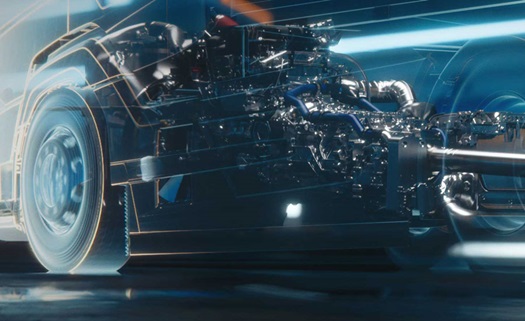
Hydrogen
An interesting option for the future
DAF’s philosophy is that we need to explore the full suite of technologies on the road of decarbonisation of road transport. What about hydrogen (H2)? Hydrogen-powered trucks are certainly a promising alternative, especially for medium and long distance road transportation. There are even two options: the first in which a fuel cell uses hydrogen to generate electricity to drive the electric motor, and secondly where hydrogen is used directly as fuel for the hydrogen engine. In both cases, CO2 can be reduced by 100%. Hydrogen delivers operational value through its fast refuel times, while it can be easily via tank or pipeline.
Comprehensive experience with hydrogen
DAF’s parent company PACCAR – together with Toyota and Shell – has comprehensive experience with hydrogen via a fleet of fuel cell trucks, operating in and around in the port of Los Angeles.
PACCAR and Toyota Motor North America, Inc. (Toyota) have announced an expansion of their joint efforts to develop and produce zero emission, hydrogen fuel cell (FCEV) Kenworth and Peterbilt trucks. These will be powered by Toyota’s next-generation hydrogen fuel cell modules. Initial customer deliveries are planned for 2024.
Hydrogen Engine
Also DAF is building comprehensive experience with hydrogen technology. A great example is the New Generation DAF XF with hydrogen internal combustion engine (ICE), which was honored with the prestigious ‘Truck Innovation Award 2022’.
Compared to the application of hydrogen for fuel cells, the internal combustion solution requires less cooling capabilities and no batteries, and is robust to any impurities in the hydrogen fuel that exist if the hydrogen is transported via pipeline, a likely distribution method. Through a technology demonstrator we have gained extensive knowledge and the expectation is that the hydrogen engine will be ready for commercialization within the coming years.
The hydrogen engine also benefits from the efficiency, reliability and durability provided by the proven foundation of internal combustion technology. Next to this: let’s put more value in the fact that we in Europe have an extensive labor force, knowledge and a full manufacturing footprint dedicated for engine development and production.

There are several ways to produce hydrogen. First of all, by cracking fossil fuels. This is called grey hydrogen because CO2 is always released when fossil fuels are processed. A second and much cleaner way to create hydrogen is through electrolysis. Electricity is generated from renewable sources passed through water to produce oxygen and hydrogen: green hydrogen for a 100% carbon-free well-to-wheel solution.

